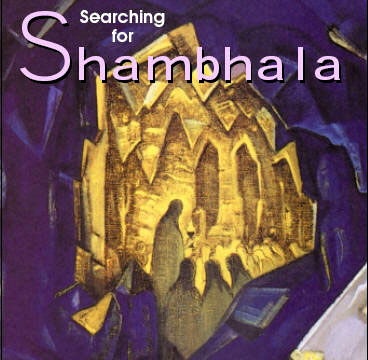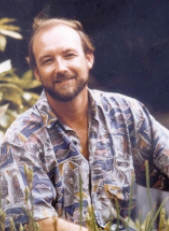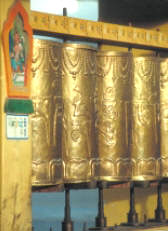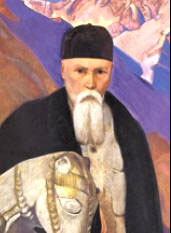|
ATLANTIS RISING - Number 21 from AtlantisRising Website recovered through WayBackMachine Website
For thousands of years rumors and reports have circulated that somewhere beyond Tibet, among the icy peaks and secluded valleys of Central Asia, there lies an inaccessible paradise, a place of universal wisdom and ineffable peace called Shambhala.
James Hilton wrote about it in Lost Horizon, Hollywood portrayed it in the 1960s film Shangri-La, and recent films such as Kundun, Little Buddha and Seven Years in Tibet allude to the magical Utopia.
The Sanskrit name means “place of peace, of tranquility.”
Though it’s true location has never been found, its beginnings are unknown and its existence is unproven, Shambhala is recognized and honored by at least eight major religions, and is regarded by most esoteric traditions as the true center of the planet and the world’s spiritual powerhouse. It is said to be inhabited by adepts from every race and culture who form an inner circle that secretly guides human evolution.
This remarkable kingdom reputedly exists both above and below ground, with a network of tunnels hundreds of miles long.
Victoria LePage writes in her superbly researched book, Shambhala:
And she maintains, the quest for this center leads us directly to Shambhala, which she calls “The World Axis.” LePage, who has been studying Shambhala for nearly fifty years, says that many marvels are supposed to have been seen in this underground world: museums, libraries, stores of jewels, and technological inventions thousands of years before their time. And, according to Chinese lore, the aircraft and space vehicles of the Immortals of Shambhala journey among the stars, observing the habitats of other races and kingdoms.
As LePage puts it,
He was also influential in the FDR administration, and was the pivotal force behind placing the Great Seal of the United States on the dollar bill. Roerich may have been on a mission to return what was said to be part of the sacred “Chintamani Stone," which was itself believed to be part of a magical meteorite from a solar system in the constellation of Orion.
According to lamaist legend, a fragment of this Chintamani Stone from what is probably the star Sirius is sent wherever a spiritual mission vital to humanity is set up, and is returned when that mission is completed. Once held in the possession of the League of Nations, it was entrusted to Roerich after the organization failed. Though it is not known whether he was able to return the fragment or not, the expedition lent credibility to those who believed that Shambhala was more than a myth.
Throughout his life, Roerich strove to link all scientific and creative disciplines to advance true culture and international peace, citing the power of art and beauty to accomplish such a feat.
Tomas, an admirer of Roerich and a strong believer in Shambhala’s physical reality, claims that Vatican archives contain reports by Jesuit missionaries which concern importations from the emperors of China to the “Spirits of the Mountains” in the Nan Shan and Kun Lun Ranges,
Tomas wasn’t the only one to consider Shambhala a physical reality: his conviction was shared both by a growing metaphysical school in Europe, and by Rene Guenon, a Sufi scholar and skilled student of the ancient Jewish Cabala, and a contemporary of Roerich and spiritual teacher George Gurdjieff.
His book, Le Roi du Monde (The King of the World), though written in a cryptic style that requires decoding, contains some of the most specific information available on the sacred site.
And, interestingly enough, a belief in Shambhala’s powers is documented to have been the driving force behind the Nazi neo-occultist mystique. Numerous writers have stated that the Nazis attempted to contact the hidden center by sending emissaries to Tibet, seeking to elicit the secrets of a great “Ahrimaic” earth-force, unknown to science, that exerts power over all of material nature, which they believed had its seat in Shambhala.
But the power-base is reputed to have invincible, divine protection, and attempts by malevolent forces to penetrate its sacred boundaries are always thwarted. Indeed, even benevolent individuals who seek to enter before they have been “called” are said to meet with disaster. One must be a purified “initiate” willing to sacrifice the human ego and human comforts before she or he is considered ready to make the arduous “journey up the mountain.”
The author of best-seller The Celestine Prophecy says he wrote Shambhala to,
James Redfield Tibetan Prayer Wheels Portrait of Roerich by his son Svetoslav, 1937
Like Celestine, Shambhala is an adventure meant to be a parable. The central character is again unnamed, reflecting every man’s identity. It’s Redfield himself, you and me and anyone else who cares to come along. This time, trekking to Tibet ala Brad Pitt, we build on previous insights, consciously connecting with our higher energy, breathing it in, sustaining it and extending it out to influence circumstances around us. We learn the “Four Extensions,” ways to enhance and channel our energy fields required in order to master our thoughts and emotions and be eligible for entry into Shambhala.
Redfield, who is vegetarian, feels there is a fundamental relationship between diet, physical movement and spiritual consciousness. He is impressed with research being conducted by Robert Young (author of One Disease, One Cure) on the acid/alkaline approach to nutrition and longevity.
We learn that we must intentionally ask to connect with the divine, and that determining our success is measured by our sense of beauty the standard Roerich espoused.
“The degree of beauty we see measures how much divine energy we are receiving within us; the higher our level of energy the more beauty we see,” writes Redfield, who says we can learn to visualize this higher level of energy flowing out from us into the world, likewise using the emotional state of love as a measure that this is occurring.
We are instructed to expect that level of energy, to believe that it will be there in all situations, and to visualize it as a “prayer-field” that goes out ahead of us.
The Second Extension begins when we set this extended prayer-field to enhance the synchronistic flow of our lives, staying in a state of conscious alertness and expectation for the next intuition or coincidence that moves our lives further along. The Third Extension involves another expectation: that our prayer-field go out and boost the level of energy in others, lifting them into their own connection with the Divine.
The Fourth Extension involves learning the importance of anchoring and maintaining the outflow of our energy, in spite of fearful or angry situations. We do this, says Redfield,
A second step in the Fourth Extension involves fully expecting that the human world can move toward the ideal modeled by Shambhala.
After outlining the dangers of currently developing technological trends, Redfield states:
The secret of Shambhala, that the angels await our invitation and directives to influence earthly situations, is our ultimate hope for bringing about the positive outcome Redfield envisions. He suggests that if we could fully embrace the idea that we are spiritual beings in a spiritual world, then food, health, technology, media and government would all move into their proper roles in the evolution and perfection of the planet.
Redfield thinks that civilization has been slowly evolving towards an ideal world, and has spent time in “intentional communities” that try to share a single vision. He comments:
LePage notes that “High Asia has always been a collective melting pot.” Though many younger Tibetans consider Shambhala to be no more than myth, the traditional culture of Tibet is totally dedicated to the spiritual life. Yin, a Tibetan in Redfield’s book, says;
Tomas sees only two types of people those who recognize a truth first and the ones who admit it last.
As yet, the thesis of a hidden community of perfect beings guiding the evolution of mankind belongs to the realm of speculation. But for LePage, such a thesis needs no outer proof: in her mind, Shambhala, and Shambhala alone, is the hidden force that has been driving the race onward towards its spiritual destiny.
|




